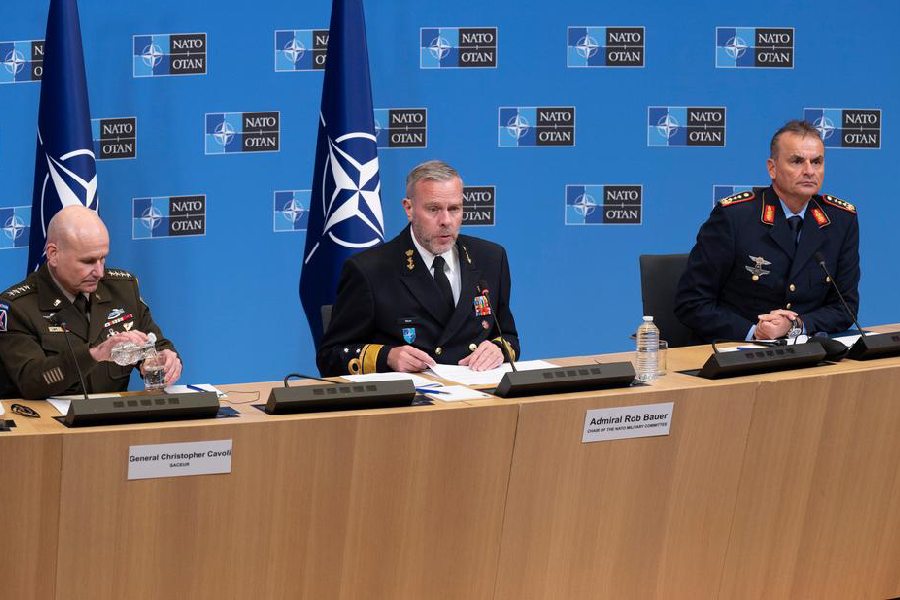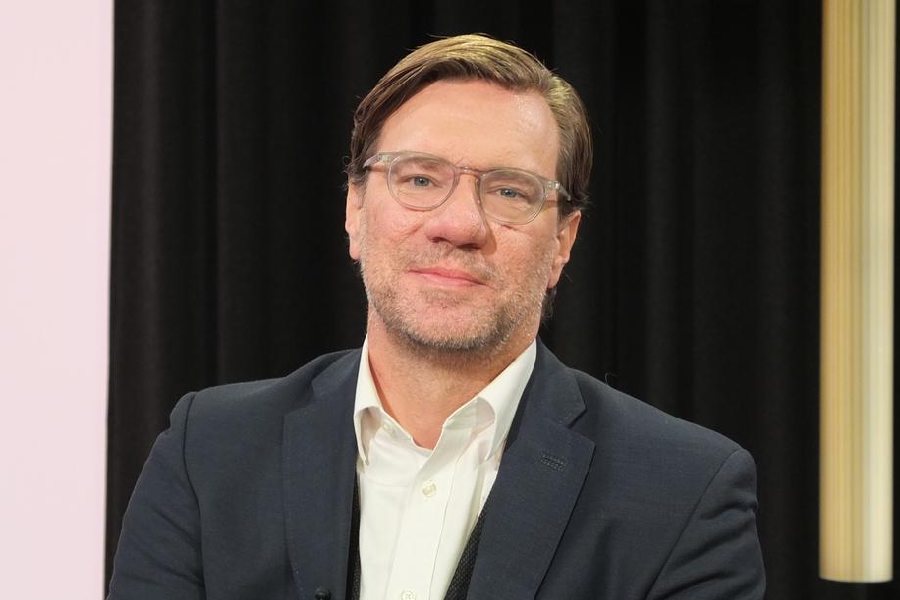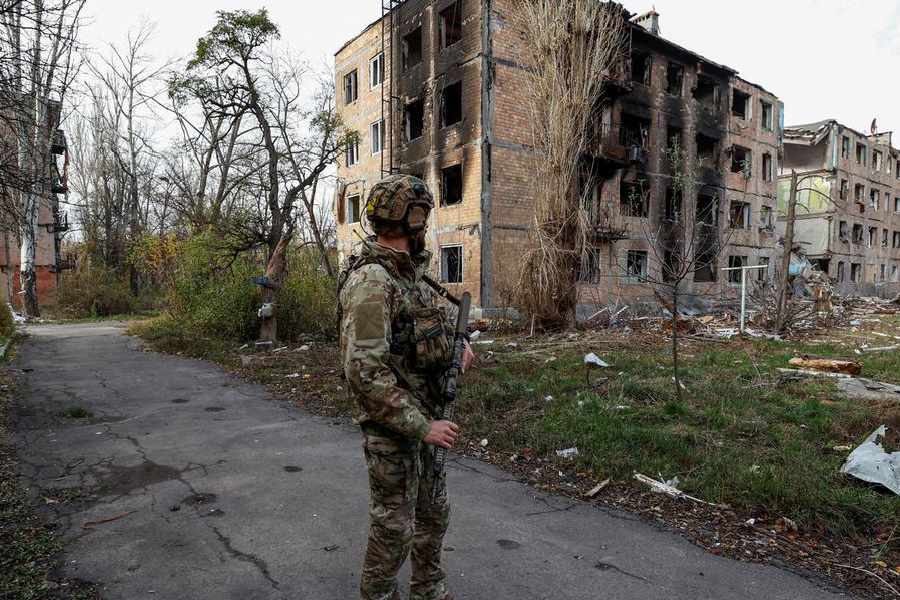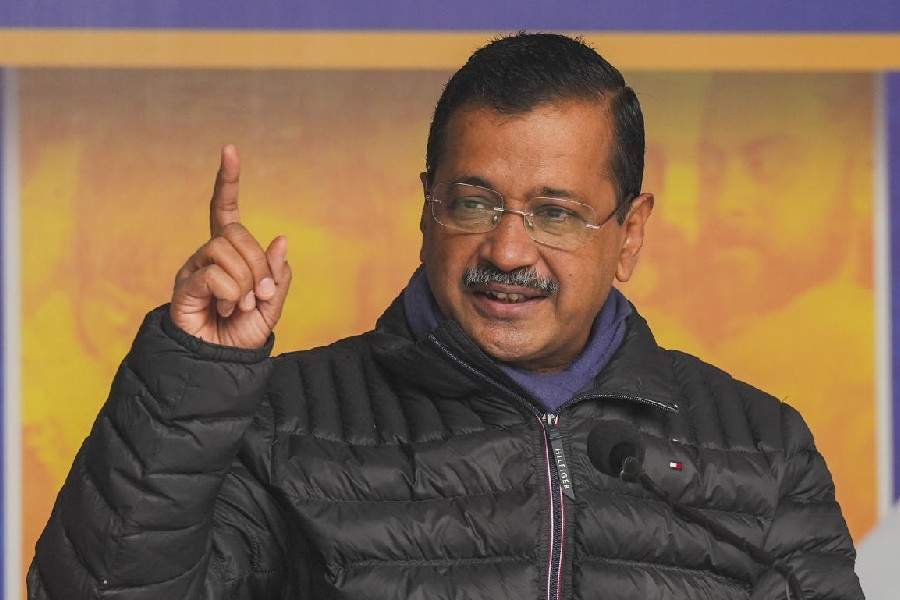Several high-ranking NATO military officials recently warned, within days of each other, that the alliance needs to prepare itself for conflict with Russia.
"We have to realize it's not a given that we are in peace," Dutch Admiral Rob Bauer, chairman of the NATO Military Committee, warned at a press conference following a two-day meeting at the end of January.
Against the backdrop of Russia's large-scale attack on Ukraine, launched two years ago this month, the Oslo daily newspaper Dagbladet reported that General Eirik Kristoffersen, the head of the Norwegian armed forces, said there was now a "window of perhaps two or three years in which we must invest even more in secure defense." Meanwhile, the commander-in-chief of the armed forces in neighboring Sweden, Micael Byden, also urged his compatriots and politicians to "move from understanding to action."

Admiral Rob Bauer (center), chair of the NATO Military Committee, warned, 'It is not a given that we are in peace' Deutsche Welle
Experts see this as a plea from military leaders to European politicians for a change in strategy in the conflict with Russia. In an interview with DW, German security expert Nico Lange commented that the hope of a swift end to the war in Ukraine, aided by Western arms deliveries on one hand and sanctions against Russia's war economy on the other, had not been realized.
Above all, both military leaders and analysts are concerned about the lack of ammunition and new military equipment, and about current arms production capacities in Europe.
In this respect, NATO's military deterrence potential is closely interlinked with supplying Ukraine. Last year, the EU promised to deliver one million shells to Ukraine by March. That promise was not fulfilled. According to Lange — an expert on Ukraine and Russia who also works for the Munich Security Conference — one reason was that the German government was too late issuing underwriting guarantees to manufacturers.
"They're doing it now, two years later," Lange says. Yet Ukraine is not the only one urgently in need of these supplies. So are the NATO countries' depleted ammunition depots.

Security expert Nico Lange says past delays in supplying weapons to Ukraine are impacting its defense capabilities now Deutsche Welle
In the worst-case scenario, Lange says, NATO has only five years in which to upgrade its weaponry, to ensure it can still successfully deter a potential Russian attack on NATO territory. An analysis by Christian Mölling, head of the Center for Security and Defense at the German Council on Foreign Relations (DGAP), drew a lot of attention at the end of 2023 when it pointed this out.
In a more recent analysis, Gustav Gressel from the Berlin-based think tank European Council on Foreign Relations (ECFR) wrote, "The West and Europeans in particular need to overhaul their financial regulations and create economies of scale to radically stimulate the production of drones, ammunition, armored fighting vehicles, and more."
Gressel says the strategy of supplying Ukraine primarily with familiar, Soviet-produced weapons from the reserve stocks of Eastern European states is reaching its end because there is simply nothing left. He warns that weapons production has to be ramped up massively — for both Ukraine and European NATO countries.
In this second winter of war in Ukraine, military leaders and analysts are focused above all on Ukraine's inferiority in artillery combat with Russia. It seems that Russia is able to plug its obvious gaps with supplies from North Korea, whereas Ukraine has been forced to ration ammunition.
In a recent podcast from the series "War on the Rocks," analyst Michael Kofman from the American Center for Naval Analysis (CNA) said Russia has "established a five-to-one fires advantage at the front" — that is five Russian missiles launched for every Ukrainian shell. More pessimistic analyses put this ratio at 10-to-1.
Kofman believes it is possible the Ukrainians will have to withdraw from the contested town of Avdiivka on the eastern front. There is also a danger of a major Russian attack on the city of Kupiansk, further north.
In a recent radio interview, Christian Mölling of the DGAP said it was increasingly clear that the past two years of delays in supplying Ukraine with ammunition and military equipment now mean it will have to withdraw from territory it has liberated.

Ukraine may again be forced to withdraw from the heavily contested eastern city of Avdiivka Deutsche Welle
However, in the run-up to the summit meeting of Western military experts next week at the Munich Security Conference, Nico Lange believes that we are seeing the beginnings of a change in strategy. This, he says, has been prompted by the military situation in Ukraine and by the analyses of Western military personnel, who also have an eye on their own forces' armament requirements.
In an interview with the newspaper group Redaktionsnetzwerk Deutschland, German Major General Christian Freuding stressed the importance of the "long-term structured capability building of the Ukrainian armed forces, which we are now addressing."
Indeed, the Ukrainian armed forces are also reporting successes, despite Russia's advantage, with targeted air strikes on Russian radar sites, bases, and supply routes in Crimea and southern Ukraine.
At the beginning of February, Ukraine's commander-in-chief, Valerii Zaluzhnyi, wrote, in an analysis for CNN: "Crucially, it is these unmanned systems — such as drones — along with other types of advanced weapons, that provide the best way for Ukraine to avoid being drawn into a positional war where we do not possess the advantage." For the more than 50 countries supporting Ukraine, led by the United States, this means supplying ever more high-tech weaponry.
The United States has answered the call, supplying Zaluzhnyi's troops with so-called GLSDB precision bombs since the beginning of February. Manufactured by Boeing-Saab, these have a range of 150 kilometers (about 90 miles), which puts the Russian army's main supply route — the coastal strip between Crimea and the southern Ukrainian city of Mariupol — within Ukraine's reach. Lange confirmed to DW, citing security sources, that this was indeed the case. Kyiv has been waiting for these precision weapons for more than a year.
Lange says a few things are going in Ukraine's direction but it remains to be seen whether this shift, driven by Western and Ukrainian military strategists, will be adopted by politicians in Europe. For they are the ones who must ultimately secure the financial backing to supply Ukraine with weapons for years to come, as well as for the ramping up of European arms production.











